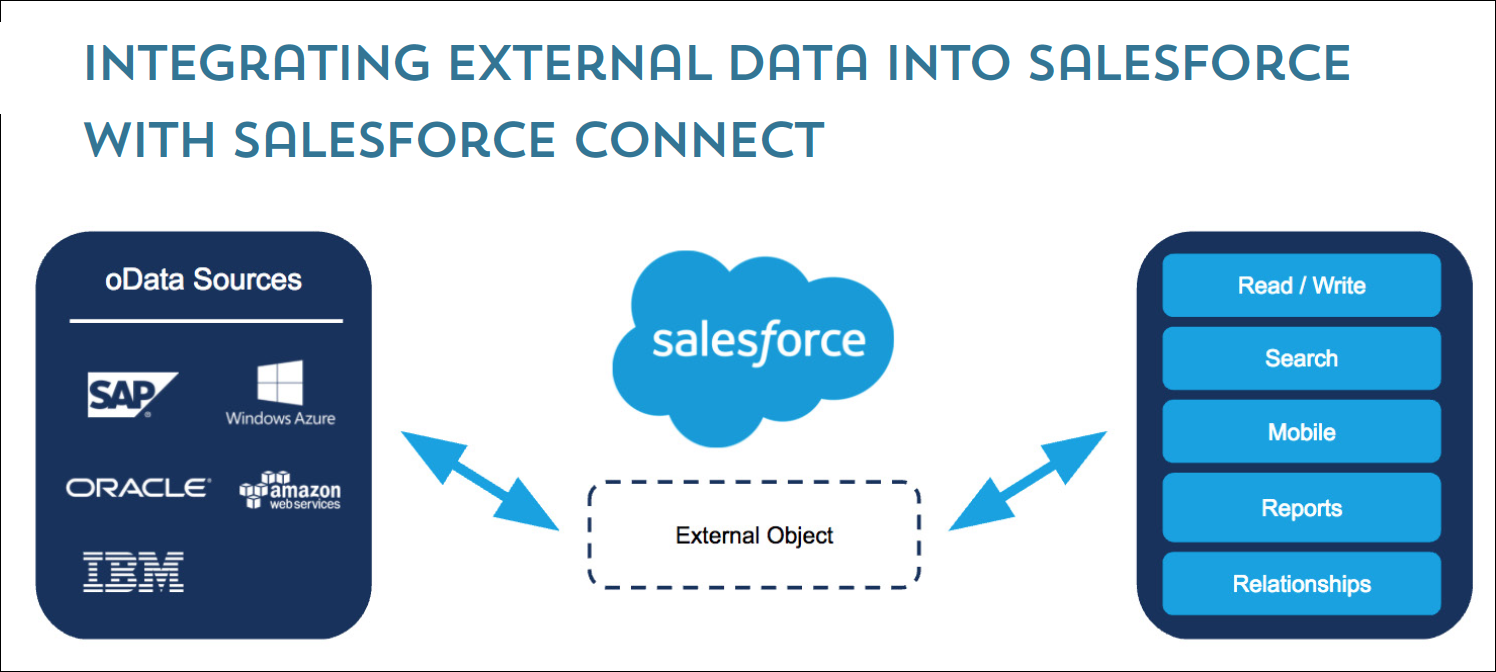'Data integration' is a crucial concept and one of today's most demanded technological elements inside a Salesforce instance. To cater to the high demand, sometimes the data needs to be continuously synced, updated and retrieved from multiple resources internal or external, to give the user a complete 360-degree view in Salesforce.
For eg., in a scenario where you're dealing with data hosted on multiple applications, platforms or systems that need to be brought into one place for better visibility. However, you want to avoid copying every database into Salesforce and you only need a small chunk of data from these external systems shared in real time.
'Salesforce Connect' solves the problem by providing seamless integration and allowing your users to view, search, and modify the data stored outside your Salesforce org.
What is Salesforce Connect?
Salesforce Connect is an OOB (out-of-the-box) salesforce tool. One that helps set up the connection between Salesforce and any on-premise ERP (enterprise resource planning) system or any external system using OData service with a point-and-click ease. You can integrate tables from your any ERP you use such as SAP® NetWeaver Gateway, Microsoft Dynamics® NAV, and many other data sources. Data can be rendered in real-time in the native Salesforce application and synced in external objects. This data would never get never stale, and we can access only what we need.
How does Salesforce Connect work?
Salesforce Connect uses several authentication settings to access external objects. Salesforce Connect supports three types of adapters for accessing external objects. The following adapters are listed below:
Cross-Org:
Cross-org uses a Salesforce API to provide access to data from/to other Salesforce organisations. Leveraging the power of Lightning Platform REST API to access data from another Salesforce org and by using point-and-click tools.
OData:
OData is a REST API for data interchange that connects to all systems supporting OData 2.0 or 4.0 protocol that helps generate valuable insights for businesses from external data sources. Salesforce Connect uses external objects to access external data. It allows users to convert data into OData queries containing many parameters for resulting filtered outputs.
Apex Custom Adapter:
It's built using Apex Language, which uses the Apex Connector Framework to load data from data sources. Salesforce Connect pulls the data using the code when any specific function executes with the help of Lightning Platform.

The Advantages
- Avoid data duplication from multiple systems on Salesforce.
- As data is available in external objects (similar to custom objects in Salesforce), OOB features like Tabs, Page Layouts, Custom Fields, List Views, and Related Lists are supported.
- External data can be linked with Salesforce data and displayed as a related list.
- Increased flexibility to connect with any external system. Especially ones that support OData and it can use ERP where OData isn't supported.
How to Use and Setup Salesforce Connect
- Signup for Salesforce org.
- Create External Data Source.
- Create and Sync External Objects and Fields.
- Create a Relationship to link the records.
- Setup Layout.
Conclusion
Salesforce Connect aids the setting up of 360-degree customer views. Connect achieves this by allowing users to access data from multiple external systems in Salesforce by providing seamless integrations with point-and-click.




